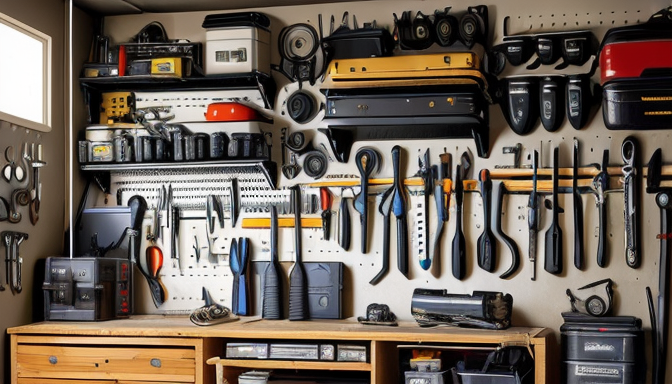Have you ever found yourself stranded on the side of the road, scratching your head over a car problem you just can’t figure out? You’re not alone! Many of us have faced that moment of panic when our vehicle starts acting up. But fear not! This guide is here to empower you with practical tips and techniques for diagnosing and fixing common car problems. With a little confidence and the right knowledge, you can tackle automotive issues like a pro!
First things first, let’s dive into the common car problems that can give you a headache. From strange noises to warning lights on your dashboard, understanding these symptoms is key to identifying what might be going wrong. For instance, if your engine is making a knocking sound, it could be a sign of low oil levels or a more serious issue. Similarly, if your car won’t start, it might be an issue with the battery or the starter. Knowing these indicators can save you time and money when it comes to repairs.
Before you roll up your sleeves, it’s crucial to have the right tools at your disposal. Here’s a quick rundown of must-have tools for effective car troubleshooting:
- Wrenches: Essential for loosening and tightening bolts.
- Screwdrivers: A variety of sizes for different screws.
- Jack and Jack Stands: To safely lift your car for undercarriage access.
- OBD-II Scanner: A lifesaver for diagnosing engine issues.
Equipped with these tools and a little know-how, you’ll be ready to tackle most automotive challenges that come your way!
Understanding Common Car Problems
When it comes to car troubles, identifying the issue is half the battle. Think of your vehicle as a complex machine, where every sound and smell can be a clue. Have you ever heard a strange noise that made your heart race? That could be your car’s way of saying, “Hey, something’s not right!” Common problems like engine misfires, brake issues, and overheating can often be diagnosed by paying attention to specific symptoms.
For instance, if your car is making a grinding noise when you brake, it could indicate worn-out brake pads. Similarly, if your engine is sputtering, you might be looking at issues with the fuel system or spark plugs. It’s like piecing together a puzzle; each symptom gives you a hint about what might be wrong. Here’s a quick rundown of some frequent car problems:
- Check Engine Light: This could mean anything from a loose gas cap to a serious engine problem.
- Fluid Leaks: Look for puddles under your car; different colors can indicate different issues.
- Battery Problems: If your car struggles to start, it might be time for a new battery.
By understanding these common issues and their symptoms, you can save yourself time and money. You’ll feel empowered to tackle minor repairs yourself or at least have a solid understanding when talking to a mechanic. So, the next time your car acts up, don’t panic; just remember that knowledge is your best tool!

Essential Tools for DIY Repairs
When it comes to tackling car repairs on your own, having the right tools is like having a trusty sidekick in a superhero movie. You wouldn’t want to face a villain without your cape, right? Similarly, equipping yourself with essential tools can make all the difference in diagnosing and fixing your vehicle’s issues effectively. Here are some must-have tools you should consider adding to your toolkit:
- Wrenches: A good set of wrenches, both standard and metric, is crucial for loosening and tightening bolts.
- Screwdrivers: A variety of screwdrivers (flathead and Phillips) will help you tackle anything from battery terminals to dashboard screws.
- Jack and Jack Stands: Safety first! A reliable jack and jack stands are necessary for lifting your car safely when you’re working underneath it.
- OBD-II Scanner: This little gadget can read diagnostic trouble codes, giving you insight into what might be wrong with your vehicle.
In addition to these tools, a mechanic’s tool set is invaluable. It usually includes a mix of sockets, ratchets, and extensions, allowing you to handle a wide range of repairs. Also, don’t forget about safety gear like gloves and goggles to protect yourself while you work. Remember, the right tools not only make your job easier but also ensure that you can perform repairs safely and efficiently. So, gear up and get ready to dive into the world of DIY car repairs!
Frequently Asked Questions
- What are the most common car problems?
Common car problems include issues like engine overheating, battery failure, and brake problems. These can often be identified by symptoms such as strange noises, warning lights, or poor performance.
- How can I diagnose a car issue?
Start by observing any unusual sounds or behaviors. Check for warning lights on your dashboard. You can also refer to your owner’s manual for troubleshooting tips specific to your vehicle.
- What tools do I need for basic car repairs?
Essential tools include a socket set, screwdrivers, pliers, a jack, and a multimeter. Having these on hand can make tackling repairs much easier and more efficient.
- Is it safe to perform DIY car repairs?
Yes, as long as you follow safety precautions and have a basic understanding of the tasks at hand. Always wear protective gear and ensure your vehicle is securely supported before working underneath it.
- When should I seek professional help?
If you’re unsure about a repair or if the problem persists after your attempts, it’s best to consult a professional mechanic. They have the expertise and tools to handle complex issues.